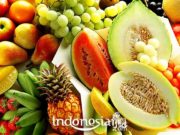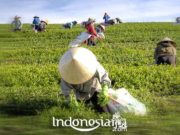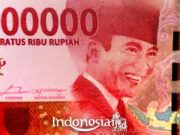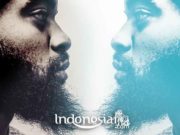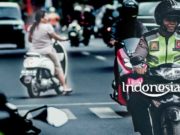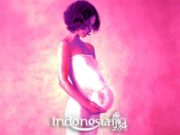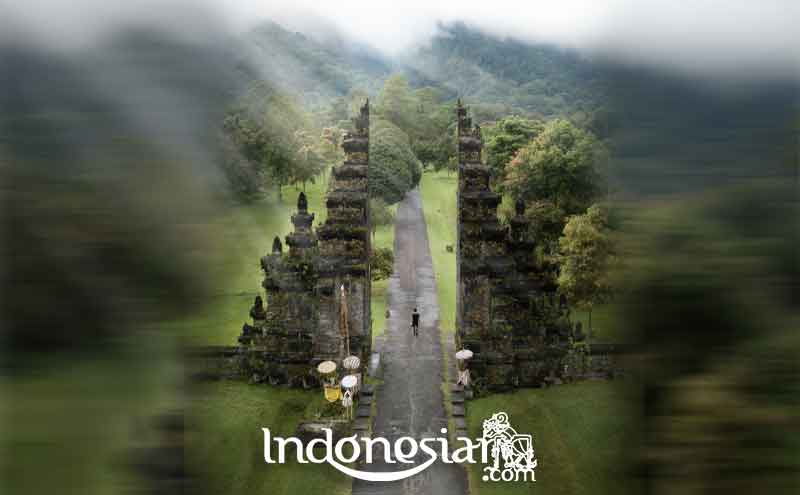Indonesia has a variety of unique ethnic and cultural diversity. “This island (Nias) is occupied by a large number of tribes.” This is how Edrisi wrote in 1154. Edrisi was born in 1099 in Ceuta, studied in Cordua, then made a long journey and finally settled in Sicily. For this king he wrote a quite thick geographic book. Among other things, Edrisi wrote about the island of Niyan (Nias), that it was “densely populated”, that there was “one big city” and that “this island was occupied by a large number of tribes.”
The oral tradition in Gomo mentions 6 ancestors or tribes that were descended from Mother Sirici. They are classified as the first inhabitants on the island of Nias. They were briefly described in the genealogy of the Nias people by two missionaries, Sundermann and Thomas, according to the oral tradition at that time, circa 1885. The two missionaries mentioned 2 genealogical trees (tambo). The first tree mentions the original inhabitants of Nias who are considered less human or like ghosts and evil spirits. And only then described the descendants of the real human (niha) in the second tree. Nias people call themselves Ono Niha (children of humans) and their homeland is called Tanö Niha (human land).
The first inhabitants of Nias
Ethnic groups from below (niha moroi tou)
These were the humans from the underworld [moroi ba mbanua tou], cave dwellers belonging to the early Mesolithic period. They adhere to the famous epi-paleolithic (Hoa Binh) culture from Vietnam. This was proven through the excavation at the Tögi Ndrawa Cave near Gunungsitoli in August 1999 by the Nias Heritage Museum in collaboration with Airlangga University.
The following excavations were carried out by the Medan Archeology Center.
Tögi Ndrawa, meaning: Cave of Strangers. This cave was inhabited more than 12,000 years ago. Their ancestors were called Latura Danö or Nazuwa Danö or Ba’uwa Danö. There are several variations of the name.
The problem is, in the study of patriliniar DNA (Y-Chromosome) their offspring were not found. Their genes have not been found in the Nias people living today.
White ethnic groups (niha safusi)
Their ancestor was Bela, and they were called Ono Mbela (son of Bela). The excavations at the Tögi Ndrawa Cave were carried out, because oral tradition speaks of cavemen. It is true. Oral traditions should not be underestimated. More and more oral traditions talk about the Ono Mbela tribe, namely humans who live in trees. They own the forest and animal genera in the jungle (sokhö utu ndru’u). Humans from other ethnicities or tribes who want to hunt in the forest, must ask permission from them by giving offerings (offerings). In 1985 you can still see the offerings placed under the tree.
Ethnic Groups on the River (cuhanaröfa)
Their ancestors by oral tradition in Nias are called Cuhanaröfa.
Ethnic group with large heads (a gazuzu)
Their ancestor was Nadaoya, who was seen as an evil spirit or a devouring demon.
Ethnic Group Next to the waterfall (sihambula)
Also called Sihambula, who lives under the waterfall and Awuwukha, who lives in a steep ravine.
Ethnic groups under the water (barö nidanö)
There is no possibility, people live underwater. Most likely, the person referred to here is a person or a tribe who drowned in the Tsunami. For them, the term Bekhu Nasi (sea ghost) is also used.
It turns out that the Niha (human) tribe, which speaks of the oral tradition, prioritizes their own tribe and does not want to throw it away to tell us the news about the first inhabitants of the island of Nias.
Who are these people and do they really exist? There were definitely people on the island, before the current ethnic groups arrived. This is confirmed by historical records and archaeological research. Some of the groups described may just be mythological, but others, especially people who live in caves and in trees, do exist. They may be an Austronesian ethnic group that has been isolated in Nias. Some Nias people now have curly hair, which may be the result of genes from the first inhabitants of Nias.
The inhabitants of Nias called Niha (humans)
According to their mythology, the Nias people originally lived in the world above (heaven), and their original ancestors brought them down to earth (Nias Island).
Ethnic Group from above (moroi yaŵa): Niha (human)
Mother Nazaria passed down one ancestor from that human group. It was not clear who he was, either Ho or Hia or Hia-Ho. In Hoho it is called: Ho at the beginning (Ho ba mböröta). DNA research has revealed similarities between Nias tribes and tribes in the Philippines and Taiwan. Meanwhile, the original tribes in Taiwan came from Yunan, South China.
In the 2 oldest lineages written by Sundermann and Thomas, it is recognized that there were other tribes in Nias, before the Niha came. The Human Group is estimated to have entered Nias around 1350 AD They brought progress in the sectors: agriculture, animal husbandry, weaving techniques, carpentry, blacksmiths, goldsmiths who came from Padang Lawas Sumatra, house architecture, customs / culture, respect against parents and ancestors, ancestral statues, megalithic culture, genealogy, etc.
Given that at that time the Ming dynasty controlled the seas in Southeast Asia to Africa, remember also that at that time in Singkuang, the city at the mouth of the Batang Gadis river facing Nias, there was a Chinese colony and a shipyard (see Tuanku’s book. Rao), it is very possible that the Niha tribe in Nias originated from there. There are quite a few indications for that theory. As a comparison we can see the Mandailing tribe, which is a mixture of Javanese, Chinese and Bugis.
The famous ancestors of the Niha tribe are Mother Siraso, Hia and Ho. They live in Sifalagö Gomo. Research conducted by the Medan Archeology Center in Sifalagö Gomo found evidence of Niha’s presence in Sifalagö Gomo in around 1350 or around 600-700 years ago.
Immigration before Hia?
Daeli ancestors, counting 42 generations in the lineage.
Ho’s ancestors, counting 56 or 59 generations in the genealogy.
The ancestors of Sihai, Sirao, Luomewöna count l / k 60 generations in the lineage for the Zebua clan.
Gözö / Baeha ancestors, counting ca. 40 generations by the Baeha clan in Lahewa.
Daeli’s ancestors resided in Tölamaera, Idanoi and Gözö near the mouth of the Muzöi river.
Ama Waigi Hondrö in the village of Onohondrö also mentions an ancient formula: “Shiva götö niha me löna so Hia.” It means: 9 generations before Hia. Then we have to subtract about 225 years from the year that Hia was born.
By looking at the many generations of the ancestors above, we must predict the arrival of these ancestors long before Hia. By counting 25 years for one generation, their immigration might be as follows: Daeli in ± 950 AD, Ho in ± 600 AD, Sihai / Zebua in ± 500 AD, Gözö in ± 1000 AD
This calculation is not intended to justify the generation figures in the above mentioned pedigrees. Only describes a scenario for further research on the history of the ancestors in Nias. The ancient formula reads: Ladada raya Hia, lafailo yöu Gözö, ladada Ho ba ndroi Gaidö, ya’ia börö zanatulö. Hia was sent down in the South, Gözö was sent down in the North, Ho was sent down in the Gidö Valley, he was the source of peace.
Other ethnic groups in Nias
The Polem tribe from Aceh
In 1639, Iskandar Muda died in Aceh. Three years after that, in 1642, the Polem tribe from Aceh entered Nias wearing 7 dips. They anchored at several places on the East coast of Nias island, including at the mouth of the Idanoi river, which has since been called Luaha Laraga. Their descendants are found in the village of Mudik and also in To’ene.
Relics from that era are the 2 large cannons that can be seen in the Pendopo in Gunungsitoli and in front of the oldest mosque in Mudik.
Bugis tribe
The Bugis are known as nomads. In the Nias oral tradition there are several clues about their presence on Nias island: Laowö Maru in the south of Gunungsitoli, Masa in the upper reaches of the Oyo river (Ulu Noyo), Bahoya in Mazinö and Bekhua in Telukdalam. But now, they are no longer there. Their descendants have been found on Hinako Island, and Sirombu and on Tello Island. In Nias, the Buginese language is called li mbekhua. They have long since left their own language. However, the language still remains in the names of the islands, u.p. the name Tello Island. In the past, in Makassar there was a kingdom called Tello. The Bugis tribe in Hinako was once attacked by Acehnese and almost all of its citizens were killed by Acehnese. The descendants of the Bugis still exist in the Hinako archipelago, their clan names are Marunduri and Maru’ao.
Chinese (Chinese)
The Chinese have been coming to Nias as traders for hundreds of years and many of them have settled on the island. Chinese families have lived in the larger towns and villages along the coast for generations. In Gunungsitoli there are many people of Chinese descent. Examples of Chinese clans in Nias are; Lim (Halim), Thio, Wong, Tan and Gho.
Nias language
This language is very old and unique, it is not known where it came from and cannot be combined with other languages in one language family or family. It is assumed that every new tribe that immigrated to Nias, gradually left their own language and then adopted the Nias language (the language of the population that is already present there). The most recent example is the Bugis in Hinako. Around 1800 they left the Buginese language. Likewise, Polem descendants who adapted to Nias and spoke the Nias language. For example in the village of Mudik. But often there are still relics from their own mother tongue that are preserved.
There are currently about one million speakers of the Li Niha language. This includes 700,000 ethnic Nias people who live on the island as well as several hundred thousand Nias people who live elsewhere in Indonesia.
Customs and laws (hada, böwö, huku, religion)
It is generally acknowledged that our customs (hada, böwö) in Nias originate from Gomo. However, this does not mean that the entire Nias community comes from Gomo. The essence of all customs is the marriage custom (böwö ba wangowalu).
Another very important part is the law formulated at the Fondrakö feast. Another part is the religion of the ancestors, namely respect for parents (ancestor worship). Everything is conveyed with prayers and offerings to parents who have died or to the ancestors. Everything is requested with prayers from them.
The structure of Nias society is patrilineal. Included in a clan or clan are all people who come from a male ancestor (si sambua mo’ama). Marriage is exogamy. Daughters are married to other tribes. Or the bride is taken from another tribe by paying a high enough dowry. In this case it is very important to pay attention to the Iwa (brother of the father of the bride-to-be) and the uwu or sibaya (the brother of the mother of the bride) counting 8 generations back.
Nias people change their name when they have children. They take the name of the first child born, regardless of whether it is a boy or a girl. The male parent adds “Ama” (Father) and the female adds “Ina” (Mother). For example, if a couple had children called Sökhifao, the parents would be known as Ama Zökhi and Ina Zökhi. Friends and family will use this name, while the real name is only used for official purposes. This tradition is still used in Nias today.
Village hierarchy
The Nias people have a hierarchical structure and are divided into three classes; nobles, commoners and slaves. Each class has a different level. The chiefs were the highest of the nobles, almost closer to the gods than humans. Next are the nobles involved in the leadership. The rank of the commoner was more flexible and depended on his wealth (gold, pigs and slaves) and ability to make the sacrifices necessary for the adat feast (owasa). Slaves were divided into three levels; prisoners of war, people who couldn’t pay their debts, and criminals on pardoned death. Prisoners of war were the lowest category and were sometimes sacrificed when a head was required for ceremonial purposes.
A Soldier Society
Around the 11th century when slaves became a commodity, Nias Island was often raided by outsiders. Finally the Nias chieftain was also involved in trade, by selling captured enemies in exchange for gold. For a long time, the people of Nias lived in a state of constant conflict. Often in a state of self-defense against slave robbers or involved in tribal wars. The people of Nias developed a culture of war, focused on building defenses and making weapons. Youths are raised to be fierce warriors and training begins at an early age. As a result Nias had strong warriors, skilled builders and blacksmiths, but less skilled farmers or fishermen.
Being a soldier doesn’t mean that one always has to fight. Strategic and cunning planning are essential skills in Nias society. The political strategy of movement between the village and öri is part of the constant power struggle. For example a village could side with Dutch troops to attack against the enemy, only to switch sides later. Anyone who can persuade another to make their offer with words alone is highly respected. The art of oratory is highly valued, and to this day Nias people are highly skilled public speakers and possess natural political skills. Come on, get other interesting information from indonesiar.com.




